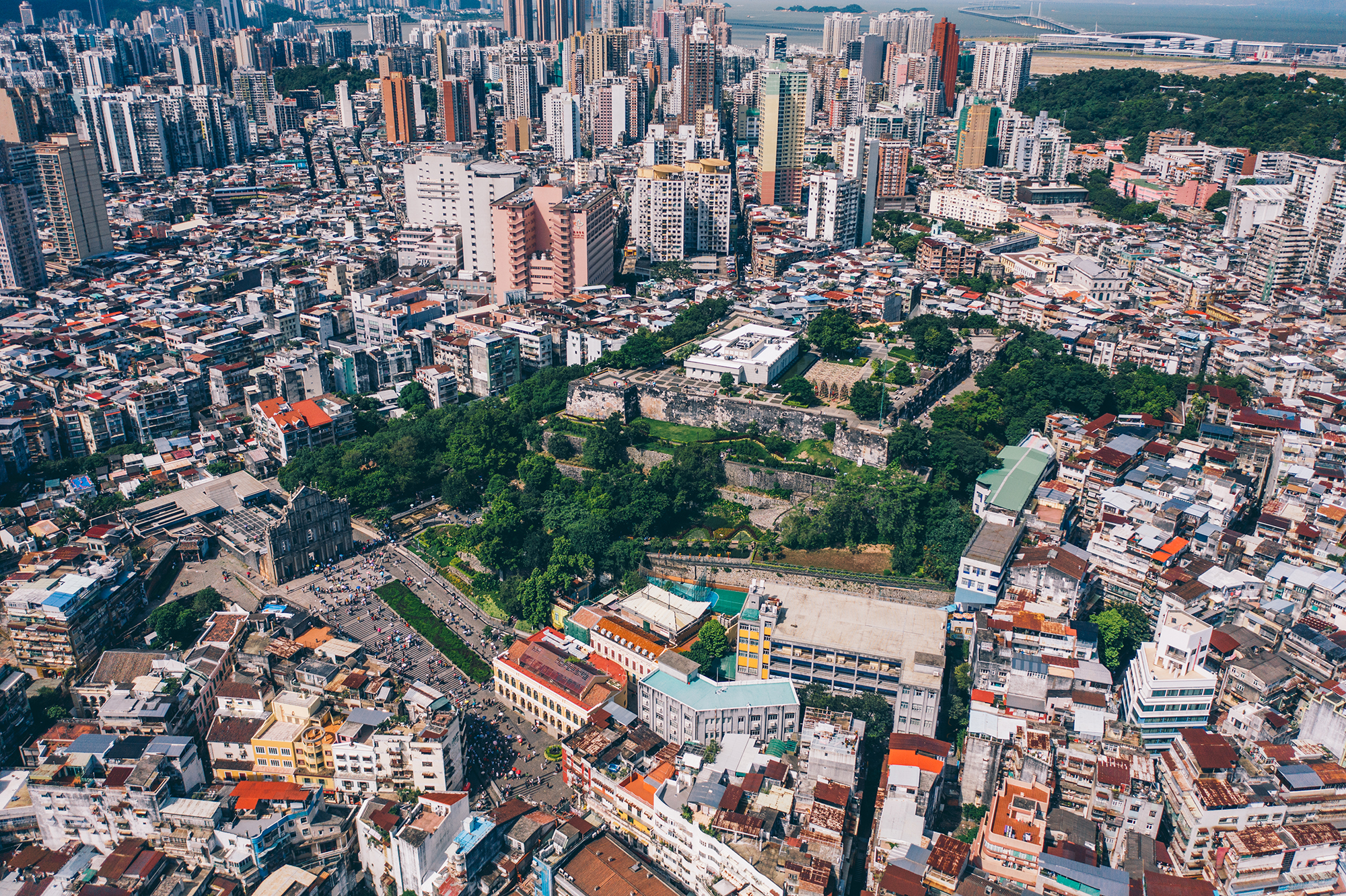The recently gazetted Macao Urban Master Plan 2020-2040 has been published after many years of intense urban development in the territory.
From 1999 to 2007, there was an almost total lack of policy underpinning urban development in Macao. Major urban planning was still made on an ad-hoc basis, a legacy of the colonial period.
The turning point was the approval of the Urban Planning Law n. 12/2013 and the Property Law n. 10/2013. Both gazetted in 2013, these two laws defined the legal framework for all planning instruments – such as state planning policies, draft regulatory provisions and planning schemes – to be set-up, including the Macao Master Plan.
There are a lot of grey areas in the implementation of urban policy in Macao, so the success of a master plan may differ based on how we understand its role. What do we want our master plan to define and regulate, and to what extent? What do we want to restrict and what strategies do we want to put in place?
How we shape our city will ultimately affect the environment, our social well-being, our economic vitality, our sense of community and connectedness. A plan without a strong vision will not gather momentum and solidarity from all the significant social and economic stakeholders.
In my opinion, the Macao Master Plan should define a vision and goals for each sector with a sustainable development strategy that takes into account land use, housing, economic development, natural resources, open space and recreation, services and facilities, transportation, and circulation (the movement of people through and around the built-up environment). And it should be created with attention given to economic, social and spatial components alike.
In the case of our city’s master plan, there are a series of issues that will influence future development which I want to raise and evaluate: namely how this plan will affect policies on zoning, housing, transportation and mobility, heritage protection, population density and regional integration.
Zoning
The Master Plan plays a big role in redefining zoning criteria. As a consequence of this being the first master plan for Macao, all the previous zoning definitions were elementary and single-layered, not allowing for mixed-use buildings or the complex integration of different functions within the same space.
The only type of mixed-use building commonly found in Macao has been housing with retail, or offices with retail, and even those buildings face huge limitations in Macao’s adopted podium-tower typology (a commercial or residential tower constructed over a multi-level, mixed-use podium structure). They do not allow for retail solutions on multiple floors, which would improve a lot of commercial areas where urban plots are generally small.
The Master Plan proposes a multitude of new property uses and a greater flexibility for combining different uses as well. This will give future developments much more flexibility – for example, by combining residential space with office and educational spaces – while still restricting incompatible uses.
The first new zoning definition, the Zones of Collective Use, will allow for the integration of sports, culture, education, and health and government agencies under the same roof. Meanwhile, the Commercial Zones framework gives us an opportunity to reconfigure the whole city.
The following zones are earmarked to become commercial zones: the western part of Zone B, south of NAPE; the area around the Zhuhai-Macao Border Gate; and the industrial area along Avenida Wenceslau de Moraes, all on the Macao peninsula; and the site of the ex-Ocean Park development, part of Zone C and part of Zone E on Taipa.
As these zones are developed, I hope that our current fixation with podium-tower construction – our greatest urban sin in Macao! – will be dropped to allow for more flexible use of urban plots.
In terms of zoning definitions, the Master Plan does a great service for Macao. It will allow a huge range of future design options, which will allow the city to overcome the many limitations of the old regulations.
Housing
A new definition for Housing Zones, allowing for combined office and housing developments, will allow for more interesting, and more inclusive, public housing for low and middle income residential areas.
Transportation & Mobility
The Master Plan does not state any long-term vision for the Macao Light Rapid Transit (LRT) network, nor a revision of the bus network operation and its interface with other modes of public transport. It does however emphasise the importance of developing transportation infrastructure at the borders to facilitate the flow of incoming tourists into the city.
The future efficiency of mobility based on public transport does not seem to be a priority in the policy, which is problematic, as the reduction of private cars and motorcycles is very urgent and overdue. Walking and cycling as a mode of transport isn’t seriously addressed in the Master Plan, either.
I believe that with some city-wide planning and the expansion of the pedestrian island in the centre, walking could become a viable option for many residents and contribute to lowering the city’s emission levels.
Heritage Protection
In article 22, the Master Plan states that it should be articulated with the Heritage Management Plan. It recommends limitations and restrictions for heritage areas, with some clear guidelines for new non-aedificandi areas (land where building construction is prohibited or to be sold) and some not very clear ones for expanding the pedestrian island in the historical centre and for creating visual corridors.
The Master Plan defines several new non-aedificandi areas, which means that construction beyond the existing urban lots will not be allowed. This is a great leap forward for Macao and will reduce pressure to develop and urbanise every square inch of the city.
All of the areas listed next have now been granted non-aedificandi status and cannot be developed in normal circumstances: Ilha Verde Hill; the reservoir and Mong Ha Hill; Penha Hill; Guia Hill; Nam Van Lake and Sai Van Lake; the Taipa Pequena and Taipa Grande Hills; the wetlands south of Avenida da Praia in Taipa; the ecological area in Cotai; Coloane Hill; the Seac Pai Van reservoir; the Alto de Coloane wetlands and the Ka Ho dam wetlands.
The visual corridors that are listed are not sufficient and don’t respond to all the classified monuments and other classified buildings of architectural interest for which no protection area assessment has been ever made. I think that, in observation of the Heritage Law n. º 11/2013, every monument should have its protection zone studied and approved as a high level political priority, to avoid bad decisions like the recent intrusions permitted in the vicinity of Guia Fortress and two other monuments up the hill.
Human Density
It would have been highly advisable to define density ceilings for some areas of Macao – namely the heritage areas and other historical areas.
From my point of view, even though there are some vague recommendations to fix or reduce human density in historic areas and northern districts, not going further was a lost opportunity.
The Master Plan didn’t define density and height limitations as a prerequisite for the detailed plans for zones Central 1, Central 2, Central 3 and Zona do Porto Exterior 1 – areas that correspond to the existing Buffer Zones. There is no incentive to reduce the real-estate pressure to bulldoze historic buildings or alleviate population growth in the Northern Districts of Toi San and Hac Sa Wan.
While the Master Plan mentions high-density districts, like Central 1 and North 2, which are respectively 4.5 and 7 times more densely populated than the rest of Macao on average, there are no recommendations for policies that will reduce population density elsewhere.
Regional Integration
The next 20 years will be crucial for Macao as the city integrates with the Greater Bay Area and beyond, especially through the development of Hengqin Island as a go-between region.
Major infrastructure will play a key role in this process, but the fact that it will always be planned and implemented by the Central Government and Guangdong Province leaves it out of the scope of the Macao Master Plan.
The Master Plan, however, addresses other fields that are of great importance for the future development of the territory, like defining ecological reserves, environmental protection and use of territorial waters; unfortunately, it does not establish any vision for these and does not instruct any targets or vision for the future detailed plans.
Rui Leão is an Architect, March (FAUP), PhD in Architecture and Urbanism(RMIT), Chair of Docomomo Macau, President of CIALP, Member of the UIA Work Group for Public Space, Member of the UIA Committee for Sustainable Design.
Disclaimer: Macao News is committed to publishing stories that reflect the diversity of thought in Macao. The viewpoints expressed by the author do not necessarily reflect the opinions, viewpoints and official policies of Macao News.






